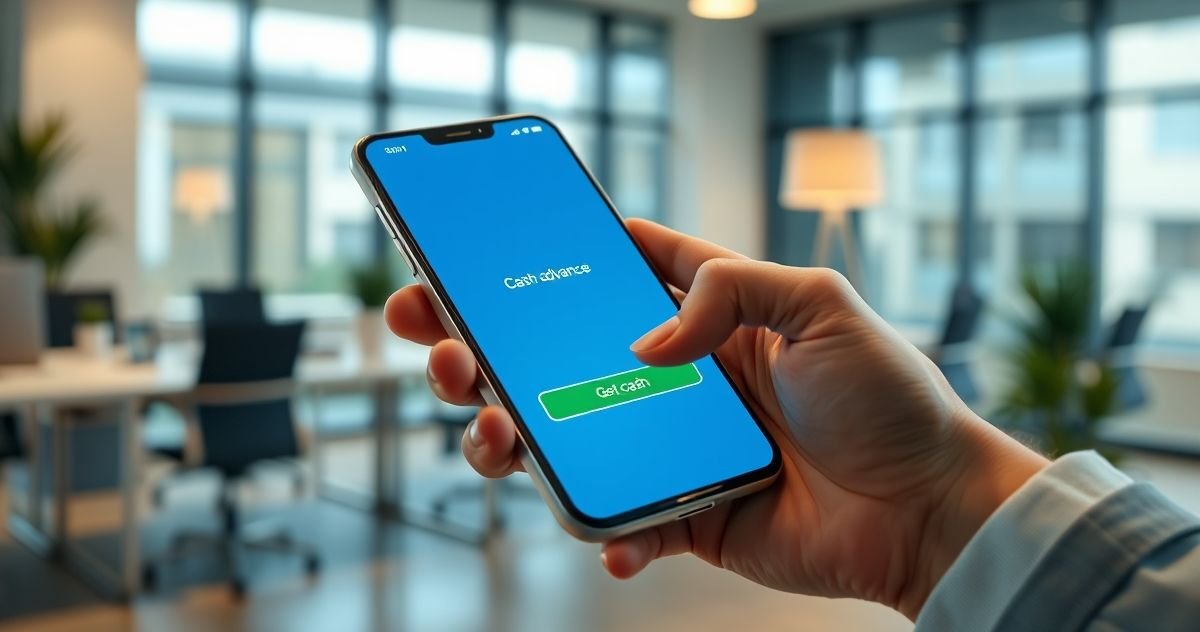How Do Cash Advance Apps Work?
Cash advance apps, also known as earned wage access (EWA) apps, operate on a simple premise: providing access to money you have already earned. The process typically involves these steps:
- Verification: After downloading the app, you connect it to your primary bank account. The app’s technology verifies your identity, employment status, and pay schedule by detecting recurring direct deposits from your employer.
- Request an Advance: Based on your verified income and the app’s internal limits (often starting between $50 and $100 per pay period), you can request an advance.
- Receive Funds: The requested amount is deposited into your bank account. Standard delivery is often free and takes one to three business days. Most apps offer instant delivery for a small express fee.
- Automatic Repayment: On your next scheduled payday, the app automatically deducts the advanced amount, plus any fees or optional tips, directly from your bank account.
Cash Advance Apps vs. Payday Loans: Key Differences
While both options provide fast cash, cash advance apps are structurally different from traditional payday loans. The primary distinction lies in their cost and repayment model.
- Cost: Payday loans are known for extremely high fees that translate to triple-digit annual percentage rates (APRs)—often 400% or more, according to the Consumer Financial Protection Bureau (CFPB). In contrast, cash advance apps typically charge a small, flat fee for instant transfers (e.g., $1 to $8) or operate on an optional tip model. Some services are free with standard delivery.
- Repayment: Cash advance apps involve a single, automatic repayment from your next paycheck. Payday loans can create a debt trap by encouraging rollovers, where borrowers pay a fee to delay repayment, causing interest to accumulate rapidly.
- Credit Impact: Most cash advance apps do not require a hard credit check and do not report your payment activity to the major credit bureaus. This means they won’t help you build credit, but they also won’t hurt your score for using the service.
Pros and Cons of Cash Advance Apps
Understanding the benefits and drawbacks is essential before using one of these services.
| Pros | Cons |
|---|---|
| Fast Access to Funds: Get cash within minutes or a few business days to cover immediate needs. | Risk of Dependency: Overuse can lead to a cycle of borrowing against future paychecks. |
| Lower Cost Than Alternatives: Cheaper than incurring bank overdraft fees or taking out a payday loan. | Fees Can Add Up: While small, express fees and subscription costs can become expensive with frequent use. |
| No Hard Credit Check: Accessibility for users who may not qualify for traditional credit products. | Doesn’t Build Credit: On-time repayments are not reported to credit bureaus. |
| High Convenience: The entire process is managed through a simple mobile app. | Can Disrupt Budgeting: Receiving an advance means your next paycheck will be smaller, requiring careful budget adjustments. |
How to Use Cash Advance Apps Responsibly
Cash advance apps are best used as a temporary financial bridge, not a long-term solution. To use them wisely:
- Reserve for Emergencies: Only request an advance to prevent a more expensive outcome, such as a late fee on a critical bill or a bank overdraft charge.
- Understand the Full Cost: Factor in any subscription costs, instant transfer fees, or optional tips to know the true price of the advance.
- Plan for Repayment: Immediately adjust your budget for the upcoming pay period to account for the smaller paycheck.
- Focus on Long-Term Solutions: If you frequently need advances, it signals an underlying budget issue. The best long-term strategy is to build an emergency fund to cover unexpected costs without borrowing.
For more information on how these products are viewed by regulators, the Consumer Financial Protection Bureau (CFPB) provides guidance on Earned Wage Access (EWA).

